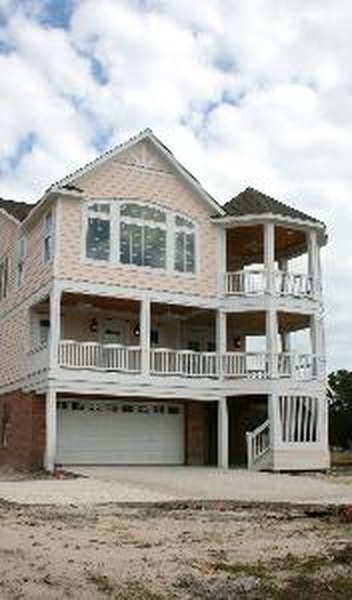How do I Get Approved for a Mortgage for a Second Home?
Buying a weekend get-away home requires a strong financial track record.
New Constructed Beach Home image by pamtriv from Fotolia.com
The loan approval process for a mortgage on a second home is a lot like what you experienced with the mortgage on your first home -- but expect more scrutiny this time around. Lenders will want assurance that you can handle two mortgages plus the costs of running two properties, including taxes, insurance and upkeep. Mortgage options differ, depending on whether you intend the house for your sole use or if you plan to rent it out for at least part of the year.
Tip
To get approved for a mortgage for a second home, you'll need to demonstrate that you can afford the costs associated with both homes.
Gather Documentation
Prospective lenders will want to know your income, assets and debts. You'll need W-2 and/or 1099 forms to substantiate your income, a recent mortgage statement to show the equity and the principal balance on your home, records to prove the current value of any stocks or bonds, a balance statement for your 401(k) and/or IRA account, a property tax bill to show your tax rate, bank statements to document your savings, credit card statements to show your current balance and statements to document the balance on any other outstanding loans you have, such as a car or student loan.
For Personal Use
If you're purchasing the second home for personal use, you'll need a down payment of at least 20 percent of the purchase price. Be prepared for an interest rate slightly higher than market rates for primary residences, and expect higher points on the loan. Your credit score also matters. If it's below 740, you may have to pay an even higher interest rate or additional points.
Investment Property
If you plan to rent out the second house for more than two weeks per year, the home falls into the of category investment properties. Mortgages for such properties carry interest rates 1.5 to 2 percentage points higher than rates for owner-occupied first homes, and some lenders will not finance investment properties, so you may have to shop around a bit.
If the house has been rented in the past, ask the owner for documentation of its rental history. Prospective lenders will want to know the rental income and how many months it typically remains vacant between tenants. If the house has not served as a rental in the recent past, you'll need a separate rental appraisal to document the incomes and occupancy rates of similar homes rented in the same area. This will cost about $300 to $600. Although anticipated income from the property will help you to qualify for the loan, expect the lender to allow no more than 75 percent of the rental income.
Using Your First Home’s Equity
If you don't have enough cash to make a 20 percent down payment, you can tap into the equity on your current home. There are tax implications, however. For example, you are no longer allowed to take a tax deduction for a second home that is purchased with a home equity loan if that home is a vacation home. For a secondary residence, you are permitted to deduct mortgage interest on loans up to $750,000 or $375,000 if married filing separately. A home equity loan will cost you 1 to 2 percentage points higher than a conventional mortgage, so limit the amount of equity you withdraw to the bare minimum.
Selecting a Lender
Once you have all the documentation and the down payment in hand, you're ready to approach a lender and submit a loan application. It may be tempting to use the bank that provided the mortgage on your first home, but shop around first. Second-home mortgage rates and policies differ from one lending institution to another and, with a little research, you may find a better deal elsewhere.
References
Writer Bio
A retired federal senior executive currently working as a management consultant and communications expert, Mary Bauer has written and edited for senior U.S. government audiences, including the White House, since 1984. She holds a Master of Arts in French from George Mason University and a Bachelor of Arts in English, French and international relations from Aquinas College.

